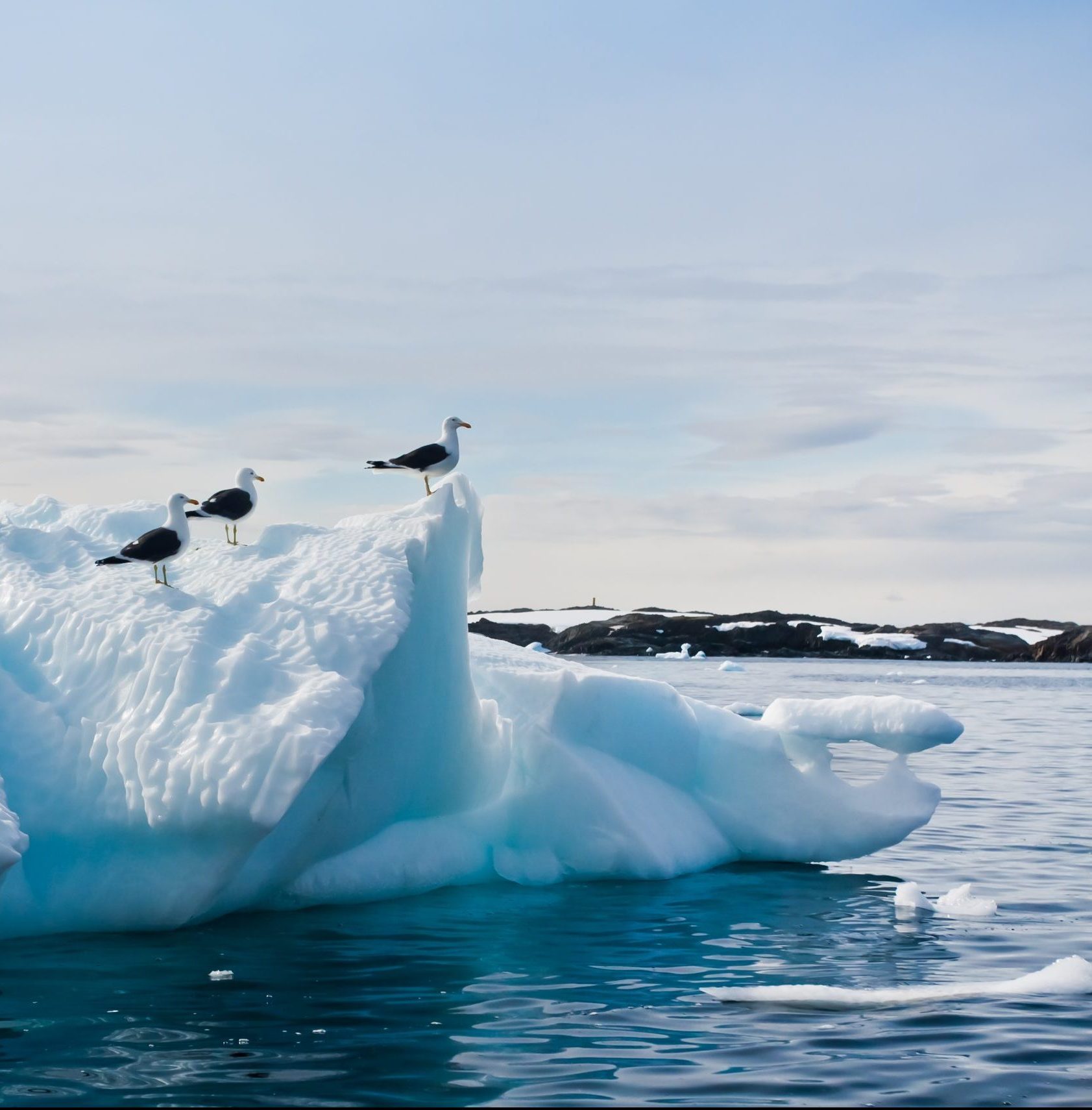Our lighthouse in the storm: principles for future cruise operators
To sustain the future of the ocean and the planet, action from all of us is needed now. The latest UN status report gives us about 2.5 years before emissions must reach their peak, to limit global warming to 1.5 and 2 degrees[1]. That’s about the amount of time since the pandemic started, not long at all. We currently lack necessary concrete solutions for the future, so the next two to three years are ‘do or die’ for the cruise industry’s future.
We need the right attitude, more action and adaption to new ways of doing business—fast. We should get comfortable spending more on sustainable solutions. Let’s be frank, that’s where it hurts the most for everyone, and that’s why there’s so little change right now. If we want to be more sustainable, we are going to have to pay for it. It’s that simple.
With almost 130 years of history along the Norwegian coast and in polar regions, Hurtigruten Group’s ships have taken expedition guests on spectacular voyages through some of the world’s most demanding waters and pristine marine areas. We have shipped vital cargo and provided people and communities in remote coastal areas with a critical transport service. We have built knowledge and experience that few, if any, other cruise companies can demonstrate, and developed an adaptability and pioneering spirit that drives us confidently into the future.
This has been the basis for key business decisions, such as when we banned heavy fuel oil; banned single-use plastics; launched three battery hybrid ships, including the most sustainable cruise ship, the MS Fridtjof Nansen; and, most recently, embarked on a significant upgrade program to cut carbon dioxide by 25 percent and reduce nitrogen oxides by 80 percent over the next 10 to 15 years[2].
And we won’t stop there. We are now planning to develop zero-emission ships, and by 2030 we will operate the first zero-emission passenger ship that will sail along the Norwegian coast[3]. This coastline will be an important testing ground for passenger ships of our size, and for the infrastructure zero-emission ships will require. We are leading the change for a greener travel industry, but we cannot do it alone.
Not everyone in our industry is driven by developing solutions and, at times, there is inertia among leaders to work collectively. When it comes to sustainability, many think the tourism industry, not least the cruise industry, cannot be part of the solution. I get it. The problems feel too big. However, that theory is wrong. We can and must be a part of the solution.
We need to get comfortable sailing into unchartered waters. As a leader, I feel that working through such challenges brings out the best in people. With the right stamina and talent, it can lead to necessary innovation and development of solutions that will bring the industry closer to a sustainable future for the ocean and the planet.
The sustainable path
If we are to achieve a sustainable transition, it must be based on sustainable values. We need to offer our guests experiences that have a green footprint. We need to make sure that our employees are part of developing a sustainable business and that our investors see the value of the transformation.
An industry that employed 334 million worldwide and accounted for 10 percent of gross domestic product in 2019 is perfectly positioned to leave positive and sustainable historical footprints, so we must work to ensure that these can be measured effectively.
The tourism industry made a historic commitment during the UN Climate Change Conference (COP26) in Glasgow in the autumn of 2021. In the ‘Glasgow Declaration for Climate Action in Tourism’, several companies joined governments and destinations in committing to cut emissions in half by 2030 and achieve net zero by 2050 at the latest[4]. To get there we need to use our projects to develop solutions that are not fully available today.
Our zero-emission project along the Norwegian coast is an such an effort: we do not have all the answers today, but we are teaming up with the best developers and researchers to try and find them. We aim to build a ship that is in line with our values, and that follows the key principles outlined below—principles that together should be our lighthouse in the storm, a beacon for a sustainable cruise industry.
Local cooperation and engagement. We will continue to integrate and develop relationships with local communities where we sail. In Norway, a report tells us that our ships create five times as much value per passenger as an all-inclusive cruise. Through partnerships and cooperation with local actors, our industry can and should contribute to create value that remains in local communities and work with local suppliers to achieve a mutually beneficial relationship among operators, communities and our guests.
The scientific approach. With our infrastructure as a platform, we give researchers, scientific institutions and organisations the opportunity to do their important work, obtain samples and monitor areas that would otherwise be hard to reach. Evaluations of the science project CRUISE#SCIENCE showed that it added value to both Hurtigruten Group and the University Centre in Svalbard[5]. When our guests get to participate in sampling, demonstrations and lectures, they gain a unique understanding of climate change and how nature is affected by rapid changes in weather patterns. Armed with knowledge and insight, guests report that they take more personal responsibility in tackling climate change.
Mass tourism is not sustainable. We have to deal with mass tourism if we want cruise tourism to become sustainable. It makes a difference whether you are going ashore with 7,000 or 700 tourists, both in small communities or larger cities. A sustainable tourism industry must be sustainable in size, and mega cruise ships will never be able to sustain and support local communities in the way smaller ship operators can.
Commitment to ESG. Reporting on environmental impact, social issues and governance (ESG) will help restructure the cruise industry of the future. Through transparent reporting, we can see our challenges and help develop the right solutions. Our ambition is to be the most sustainable travel operator in the world, pushing the industry’s boundaries for ESG. We won’t stop at a license to operate; we will do our utmost to go beyond regulations and look to best-in-class ESG solutions globally. To get there, we have developed a model for ESG reporting for the cruise industry[6]. This is groundbreaking work, and we hope it can provide a template for other operators.
Zero emissions to sea and water. The time of dumping greywater and blackwater and using heavy oil needs to be over. We must focus on projects that can help cut emissions to zero, although the technological solutions are not all there yet. With our zero-emissions project well underway, we aim to see the first emission-free ship sail along the Norwegian coast before 2030.
Zero waste. Cruise ships provide a unique opportunity. With full control over everything that goes on and off, we can take control of consumption and truly minimise our waste. The news about microplastics accumulating in the Arctic says a lot about the challenges we still face[7]. The infrastructure we create must do more than offer our guests a good time; it must also do what is required of us in every place we visit.
These are principles everyone who wants to be part of the cruise industry of the future should commit to. To reach the UN Sustainable Development Goals, and take care of our ocean for future generations, requires both action and mindset.
It makes a huge difference whether a ship arrives in port with hundreds or thousands of passengers. It makes a huge difference whether guests and operators create value for local communities and ports. It makes a huge difference when guests are willing to spend more for more sustainable adventures. All of this is vital to get to zero emissions.
At Hurtigruten Group, we support the Ocean Panel’s call[8]. As a player in the cruise industry, you either sail sustainably into the sunset, or you fall behind and sink. There are no other options. We want every operator to succeed and embrace the green recovery period. With the collective spirit, strong partnerships and willingness to invest in sustainable solutions, we can achieve our goals, and survive the many storms that come our way in the future.
—–
[1] UN News, “UN Climate Report: It’s ‘Now or Never’ to Limit Global Warming to 1.5 Degrees,” 4 April 2022, https://news.un.org/en/story/2022/04/1115452.
[2] Hurtigruten Group, “Hurtigruten Expeditions’ MS Fridtjof Nansen Rated the World’s Most Sustainable Cruise Ship,” press release, 27 October 2021, https://www.mynewsdesk.com/hurtigruten/pressreleases/hurtigruten-expeditions-ms-fridtjof-nansen-rated-the-worlds-most-sustainable-cruise-ship-3139603; Hurtigruten Group, “Hurtigruten Norway Makes a Large-Scale Investment in Batteries and Biofuel—Cuts Emissions by 25%,” press release, 11 May 2021, https://presse.hurtigruten.no/pressreleases/hurtigruten-norway-makes-a-large-scale-investment-in-batteries-and-biofuel-cuts-emissions-by-25-percent-3098614.
[3] Hurtigruten Group, “Hurtigruten Norge vil bygge nullutslippsskip innen 2030,” press release, 31 March 2022, https://presse.hurtigruten.no/pressreleases/hurtigruten-norge-vil-bygge-nullutslippsskip-innen-2030-3172062.
[4] World Tourism Organization, “The Glasgow Declaration: An Urgent Global Call for Commitment to a Decade of Action in Tourism,” 21 September 2021, https://www.unwto.org/news/the-glasgow-declaration-an-urgent-global-call-for-commitment-to-a-decade-of-climate-action-in-tourism.
[5] B. Damsgård, A. Vader, J. Søreide and K. Nørregaard, Citizen Science on Arctic Cruise Ships (CRUISE#SCIENCE) (Longyearbyen, Norway: University Centre in Svalbard, 2020).
[6] Hurtigruten Group, ESG Report 2021, https://www.hurtigruten.com/group/sustainability/reports/esg/2021/.
[7] Havforskningsinstituttet, “Mikroplast frå Europa hopar seg opp i Arktis,” 24 March 2022, https://www.hi.no/hi/nyheter/2022/mars/mikroplast-fra-europa-hopar-seg-opp-i-arktis.
[8] High Level Panel for a Sustainable Ocean Economy, “Transformations: Our Call to Action,” https://www.oceanpanel.org/ocean-action/transformations.html.






